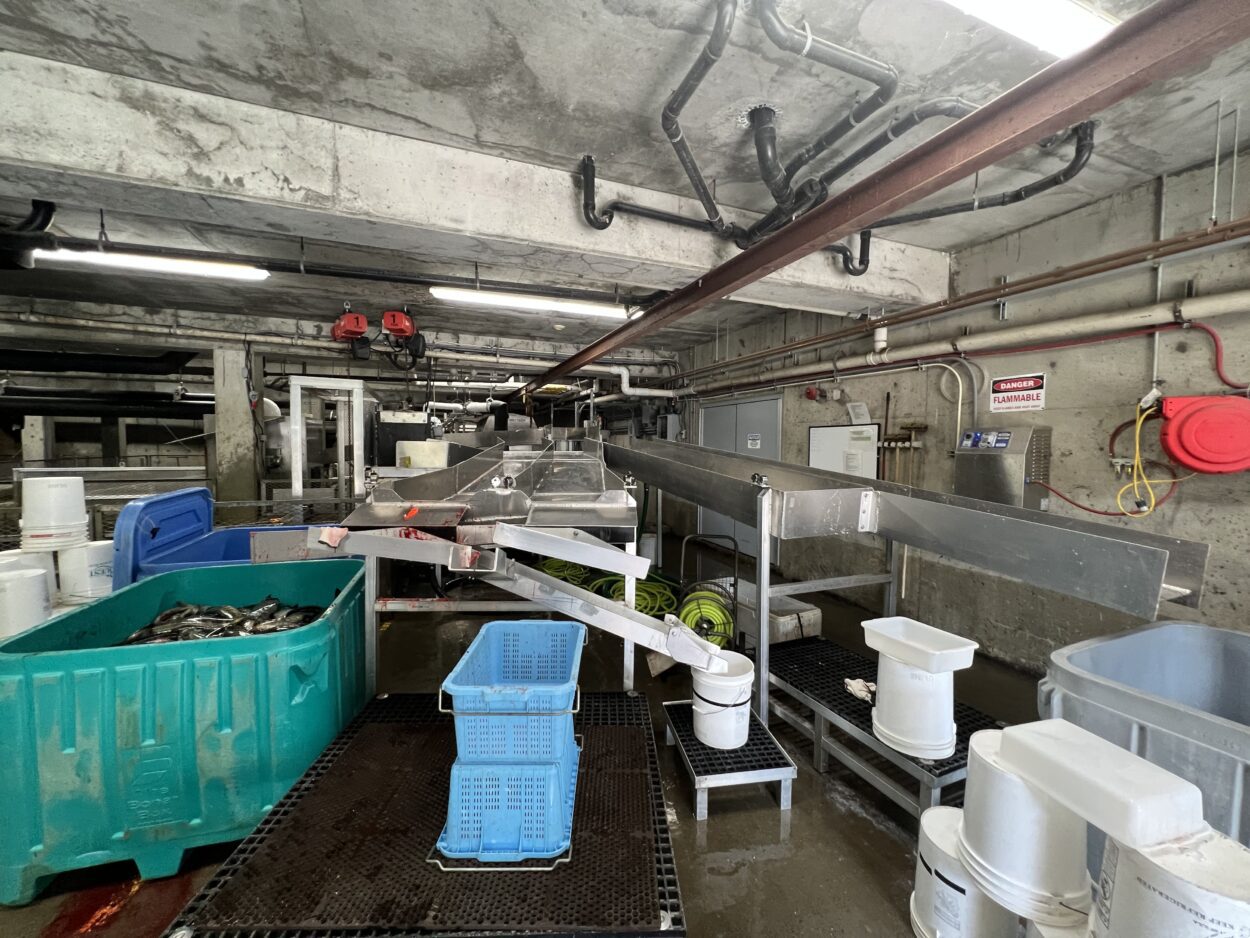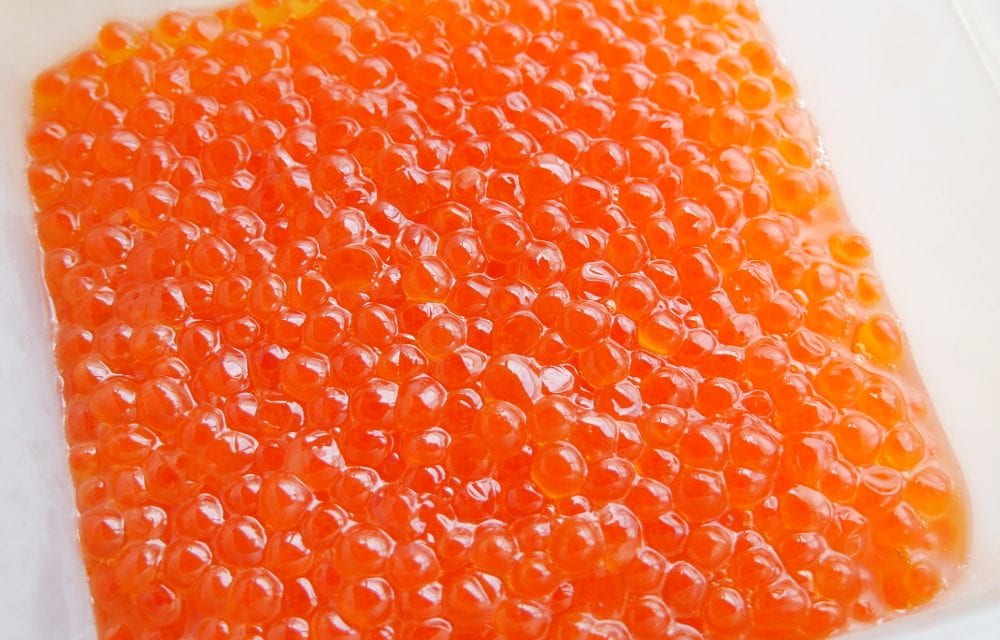Black cod could be a growing problem for salmon hatcheries across the state. Climate change is warming the Gulf of Alaska and bolstering black cod populations.
Salmon hatcheries aren’t for the faint hearted. Ryan Schumann runs this hatchery in Kake for the Northern Southeast Regional Aquaculture Association, or NSRAA. Once enough chum swim up Gunnuk Creek, Schuman seals their fate.
“We’ll close that gate and hit the winch button and force them into the building,” said Schuman.
Next comes what Schuman calls “the shocker” — which stuns the fish into unconsciousness.
“…[The] females and males, respectively,” said Schuman. “You can see one right next to the other there — he’s got those gnarly teeth and she’s just kind of got this cute little round head.”
Finally, a bash on the head with a mini metal baseball bat, and it’s lights out. The female slide sent down one chute, and then out came their bright orange eggs.

Returns that day were okay — but across the whole season, they are not. The reason? There aren’t enough four-year-olds. Most chum spawn when they’re four. Plus: too many dudes! Only a quarter of this year’s returns were female.
The goal was to collect 20 million eggs this season. They’ve ended up with less than half of that.
Schuman thinks he knows why. When the four-year-olds were released from here as fry back in 2020, they immediately came face-to-face with a mortal enemy — juvenile black cod.
“The water surface just started frothing and popping with these juvenile black cod that seemingly came out of nowhere and just frothed the surface eating these fish,” said Schuman.
Those black cod — also called sablefish — were hungry over near Sitka too. Ben Adams is NSRAA’s research manager. In 2020, he took a video during a dive underneath the rearing pens at Medvejie Hatchery on Baranof Island.
“We got in the water, and it was just remarkably dark at first,” said Adams. “So I’m starting to feel kind of disoriented and a little bit of vertigo. And finally, I recognized that I was inside of this giant school of juvenile black cod, where the fish were kind of swimming in a big vortex around me.”
Adams got a special permit to drag the pens 6 miles out and then release the chum. But was that enough to save the salmon from becoming black cod dinner?
Adams isn’t optimistic. Most chum returns to Medvejie come in later than in Kake. But you can predict how many four-year-olds will return by looking at how many three-year-olds came back the year before. And last year the return rate was tiny: just 0.04%
“0.04% is horrific,” said Adams. “It was abysmal. I mean, 2022 it just tanked to the worst that we’d ever seen.”
Those fall returns are a late season lifeline to fishermen, but this year the fisheries around Medvejie will have to be limited.
So, why were there so many black cod in 2020? Dana Hanselman is the director of Auke Bay Laboratories, a federal program which studies commercial fish species. He says sablefish spawn in deep water. And then the larvae need help getting out of there.
“It’s incumbent upon the circulation patterns to be able to transport those larvae into the nursery areas that are in bays and coastal areas,” said Hanselman. “In warmer years there’s often increased circulation that moves them faster to shore.”
Hanselman said that as water temperatures in the Gulf of Alaska have risen this past decade, so too have black cod numbers.
“Every year’s class since 2014 has been at least twice average,” said Hanselman. “And then some of them, like 2019, looked to be at least five times bigger than average.”
Plus, these fish are not picky eaters.
“Sablefish are a voracious and opportunistic predator,” said Hanselman. “They’ll eat anything and they’ll eat it quickly.”
Hatchery managers Schuman and Adams predict that next year’s returns will be much better. However, if water temperatures continue to rise, black cod could pose an increasing threat to salmon hatcheries and the fishermen who rely on them.
Back in Kake, Schuman says that for the salmon it’s just another peril in an unforgiving life cycle. It’s a cruel old way to go, but they’re going to die anyway — eaten by a bear or a seal or an eagle… Or, gobbled up by more and more black cod.











